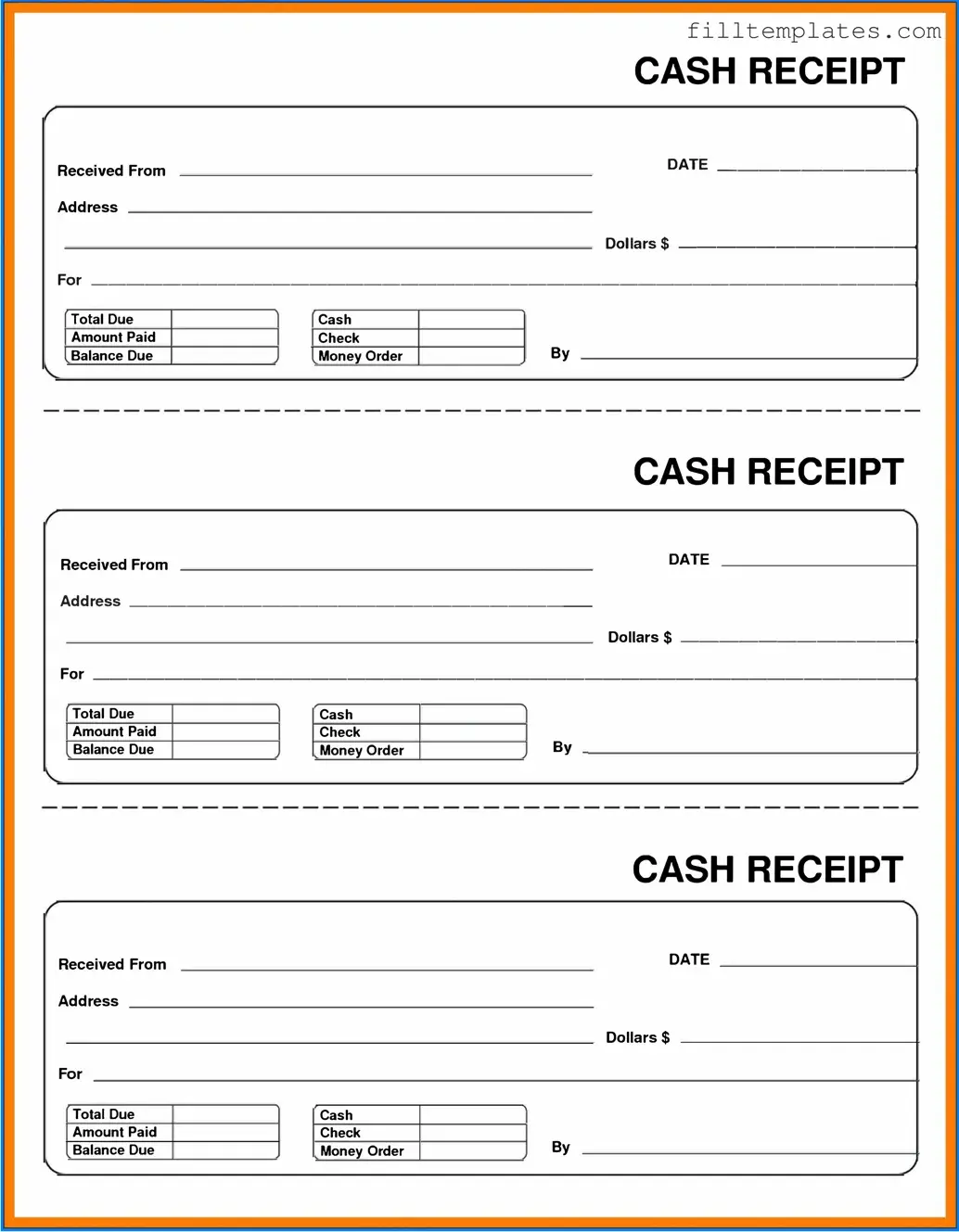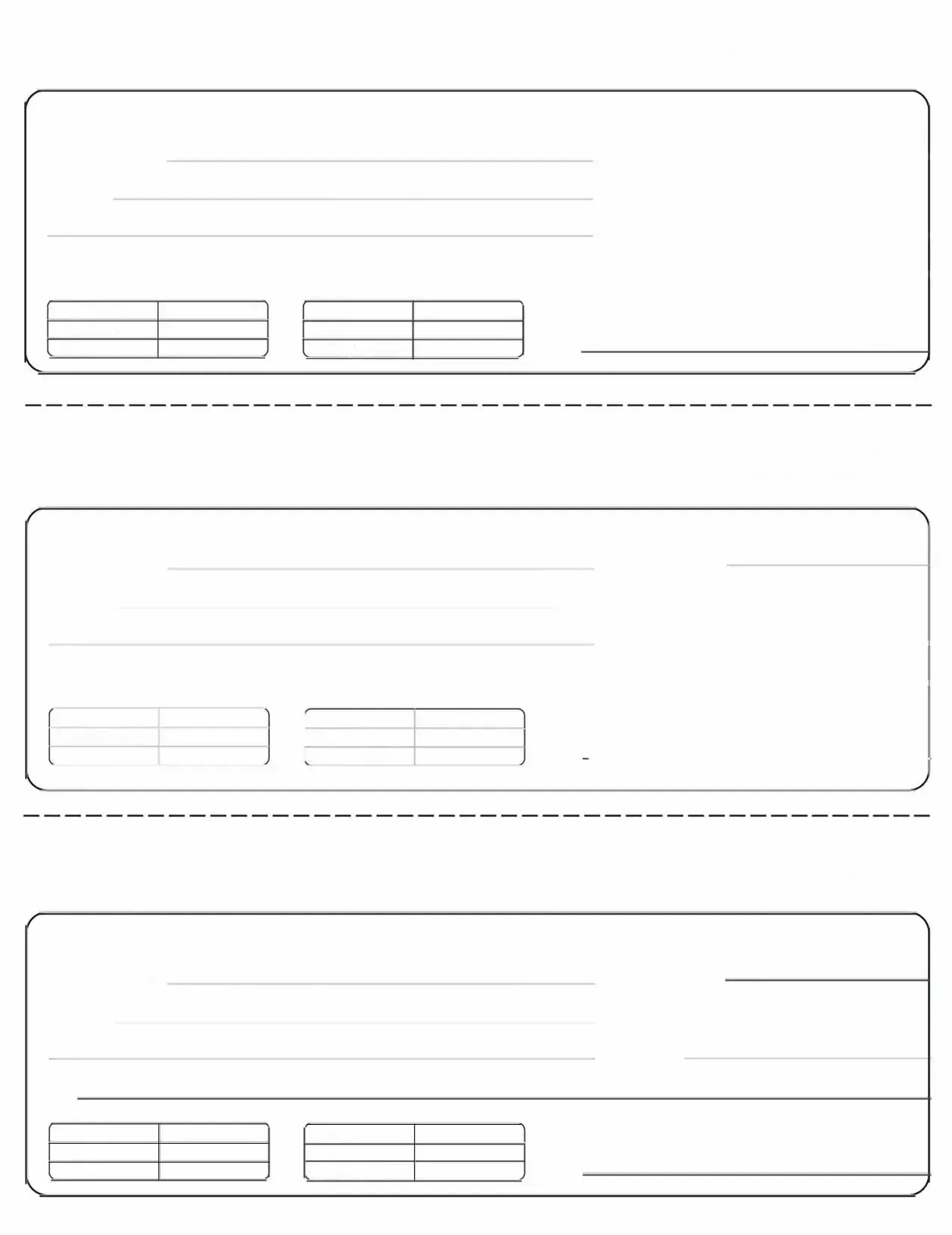The Cash Receipt form serves as a vital tool for businesses and organizations, facilitating the accurate tracking and documentation of cash transactions. This form typically includes essential details such as the date of the transaction, the amount received, and the method of payment, whether cash, check, or electronic transfer. Additionally, it often captures information about the payer, ensuring that all parties involved are clearly identified. By maintaining a well-organized record of cash inflows, businesses can enhance their financial accountability and streamline their accounting processes. Not only does this form help in reconciling cash balances, but it also plays a crucial role in safeguarding against discrepancies and potential fraud. Overall, the Cash Receipt form is an indispensable component of effective financial management, promoting transparency and accuracy in every transaction.

